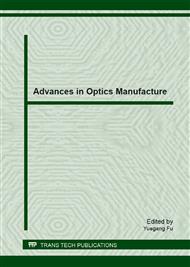p.186
p.193
p.201
p.207
p.214
p.221
p.227
p.234
p.238
Modelling and Optimization of DLC Film Thickness Variation for PECVD Processes
Abstract:
This paper describes a modeling method for film thickness variation within plasma enhanced chemical vapour deposition (PECVD) processes. The model enables the identification and optimization of deposition process sensitivities to electrode configuration, deposition system design and gas flow distribution. An comparison between theory and experiment is provided for PECVD of diamond-like-carbon (DLC) deposition onto flat and curved substrate geometries. This process utilizes butane reactive feedstock with an argon carrier gas. Radio-frequency plasma is used. The PECVD deposition system is based on co-planar 300mm diameter electrodes with separate RF power matching to each electrode. The system has capability to adjust the electrode separation as a parameter to optimize uniformity. Vacuum is achieved using dry pumps with real time control of butterfly valve position for active pressure control. Deposited film thickness sensitivities to electrode geometry, plasma power density, and pressure and gas flow distribution are demonstrated. In addition to film thickness uniformity, optical, durability and environmental performance of resulting DLC on germanium substrate materialreported.
Info:
Periodical:
Pages:
214-220
Citation:
Online since:
May 2013
Authors:
Keywords:
Price:
Сopyright:
© 2013 Trans Tech Publications Ltd. All Rights Reserved
Share:
Citation:


